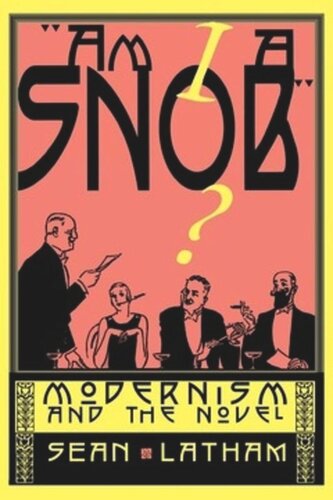

Most ebook files are in PDF format, so you can easily read them using various software such as Foxit Reader or directly on the Google Chrome browser.
Some ebook files are released by publishers in other formats such as .awz, .mobi, .epub, .fb2, etc. You may need to install specific software to read these formats on mobile/PC, such as Calibre.
Please read the tutorial at this link: https://ebookbell.com/faq
We offer FREE conversion to the popular formats you request; however, this may take some time. Therefore, right after payment, please email us, and we will try to provide the service as quickly as possible.
For some exceptional file formats or broken links (if any), please refrain from opening any disputes. Instead, email us first, and we will try to assist within a maximum of 6 hours.
EbookBell Team

5.0
60 reviewsIs there a "great divide" between highbrow and mass cultures? Are modernist novels for, by, and about snobs? What might Lord Peter Wimsey, Mrs. Dalloway, and Stephen Dedalus have to say to one another?Sean Latham's appealingly written book "Am I a Snob?" traces the evolution of the figure of the snob through the works of William Makepeace Thackeray, Oscar Wilde, Virginia Woolf, James Joyce, and Dorothy Sayers. Each of these writers played a distinctive role in the transformation of the literary snob from a vulgar social climber into a master of taste. In the process, some novelists and their works became emblems of sophistication, treated as if they were somehow apart from or above the fiction of the popular marketplace, while others found a popular audience. Latham argues that both coterie writers like Joyce and popular novelists like Sayers struggled desperately to combat their own pretensions. By portraying snobs in their novels, they attempted to critique and even transform the cultural and economic institutions that they felt isolated them from the broad readership they desired.Latham regards the snobbery that emerged from and still clings to modernism not as an unfortunate by-product of aesthetic innovation, but as an ongoing problem of cultural production. Drawing on the tools and insights of literary sociology and cultural studies, he traces the nineteenth-century origins of the "snob," then explores the ways in which modernist authors developed their own snobbery as a means of coming to critical consciousness regarding the connections among social, economic, and cultural capital. The result, Latham asserts, is a modernism directly engaged with the cultural marketplace yet deeply conflicted about the terms of its success.